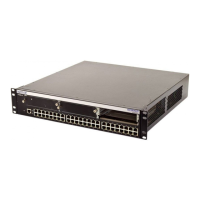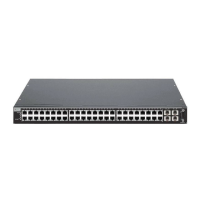area nssa default-info-originate
31-12 OSPFv3 Configuration
Usage
An NSSA allows some external routes represented by external Link State Advertisements (LSAs)
to be imported into it. This is in contrast to a stub area that does not allow any external routes.
External routes that are not imported into an NSSA can be represented by means of a default
route. This configuration is used when an OSPFv3 internetwork is connected to multiple non-
OSPF routing domains.
The no form of this command changes the NSSA back to a plain area.
Note that this command does not insert the default route into the NSSA. You must use the area
nssa default-info-originate command to insert the default route.
Example
This example shows how to configure area 20 as an NSSA.
C3(su)->router(Config-router)# area 20 nssa
area nssa default-info-originate
This command configures the metric value and type for the default route advertised into the
NSSA.
Syntax
area areaid nssa default-info-originate [metric] [comparable | non-comparable]
no area areaid nssa default-info-originate
Parameters
Defaults
Default metric value is 10.
Mode
Router OSPFv3 configuration: C3(su)->router(Config-router)#
Usage
Use this command to allow a default route to be advertised within the area. This option should be
configured only on area border routers (ABRs).
Use the no form of this command to prevent a default route to be advertised within the area.
areaid Specifies the area ID in IP address format (dotted-quad) or as a decimal
value.
metric (Optional) Specifies the metric of the default route, in the range of 1 to
16777214.
comparable |
non-comparable
(Optional) Specifies the metric type:
• comparable — nssa-external 1
• non-comparable — nssa-external 2

